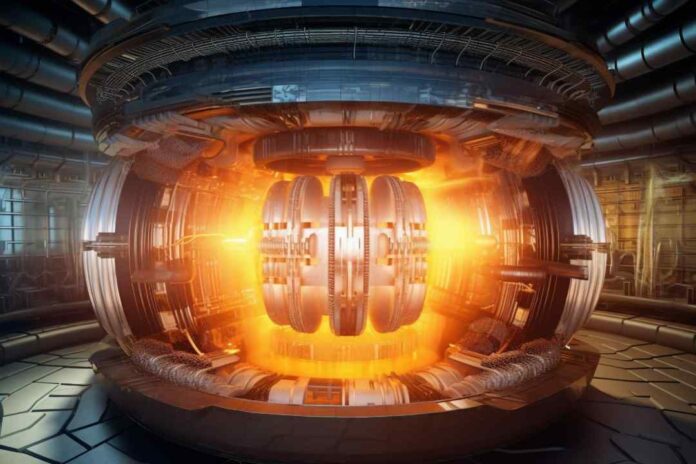China’s “artificial sun,” officially known as the Experimental Advanced Superconducting Tokamak (EAST), has achieved a groundbreaking milestone in fusion energy research. According to the Chinese Academy of Sciences (CAS), EAST recently sustained high-confinement plasma operation for an unprecedented 1,066 seconds, shattering the previous world record of 403 seconds, also set by EAST in 2023.
This significant achievement marks a crucial step forward in the pursuit of fusion energy, a technology that promises to provide a virtually limitless and clean source of power. Fusion, the process that powers the sun, involves fusing light atomic nuclei to release immense energy. However, replicating this process on Earth presents significant scientific and engineering challenges.
The 1,000-second mark is considered a critical threshold in fusion research. Sustaining plasma for such extended durations is essential for demonstrating the feasibility of operating fusion reactors. This breakthrough, accomplished by the Institute of Plasma Physics under the CAS, signifies a major leap towards realizing the potential of fusion energy.
The ultimate objective of developing an “artificial sun” is to harness the power of fusion for humanity’s benefit. This includes providing a clean and abundant energy source to address global energy demands and enabling ambitious endeavors such as deep-space exploration. As Song Yuntao, director of the Institute of Plasma Physics, emphasized, “Fusion reactions need to reach the order of thousands of seconds to sustain themselves. The latest record marks the first time humanity has simulated conditions necessary for operating fusion reactors in an experimental setup.”
Since its inception in 2006, EAST has served as a vital platform for both Chinese and international scientists to conduct cutting-edge fusion research and experiments. This collaborative approach has significantly accelerated progress in this field.
Furthermore, China’s active participation in the International Thermonuclear Experimental Reactor (ITER) program underscores the nation’s commitment to advancing fusion energy on a global scale. ITER, currently under construction in southern France, is poised to become the world’s largest magnetic confinement plasma physics experiment. China plays a crucial role in the ITER project, contributing approximately 9 percent of the construction and operational requirements.
The success of EAST’s recent experiment can be attributed to several key advancements. Researchers have made significant strides in improving the stability of the heating system, enhancing the accuracy of the control system, and refining the precision of the diagnostic systems. These technological breakthroughs have addressed numerous critical challenges, showcasing China’s growing scientific and technological prowess in fusion research.
In conclusion, EAST’s record-breaking plasma operation represents a momentous achievement in the quest for fusion energy. This breakthrough not only demonstrates China’s leadership in fusion research but also inspires hope for a future powered by clean and sustainable energy sources. As the world grapples with the challenges of climate change and increasing energy demands, the progress made by EAST offers a beacon of hope for a more sustainable and prosperous future.

Doesn’t say anything about the energy consumption the creation ratio though. Just how much electricity did they waste keeping that thing running for a thousand seconds
I’m not an expert but my understanding is that this particular tokamak is built for research purposes and is not designed to harness energy. The data produced from this experiment is incredibly useful for designing the tokamaks that are made to harness energy, so I would hardly call it a “waste.”
Dennis Realph, you idiot!
While the Burgerreich continues to elect senile rapists (Joe Biden) and billionaire rapists (Donald Trump), China paves the way for the future.
Why is degrees F even mentioned here?
Who in the physics world has ever used Fahrenheit?
Dumbing it down for American readers I guess.
The source gave 104 million °C, which, converted, is 187200032 °F. Math isn’t the author’s strong point, I guess. As is science.
[…] in fusion energy research. According to the Chinese Academy of Sciences (CAS), EAST recently sustained high-confinement plasma operation for an unprecedented 1,066 seconds, shattering the previous world record of 403 seconds, also set by EAST in 2023. […] The […]
[…] in fusion energy research. According to the Chinese Academy of Sciences (CAS), EAST recently sustained high-confinement plasma operation for an unprecedented 1,066 seconds, shattering the previous world record of 403 seconds, also set by EAST in 2023. […] The […]